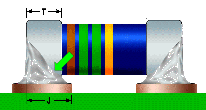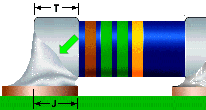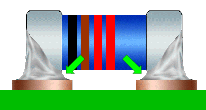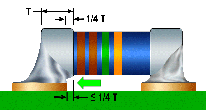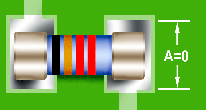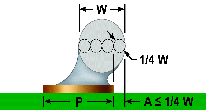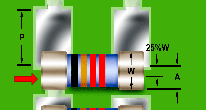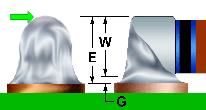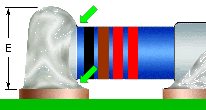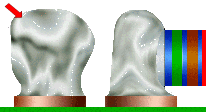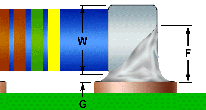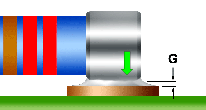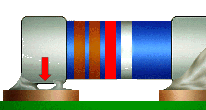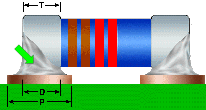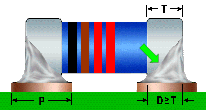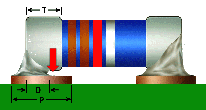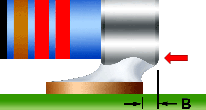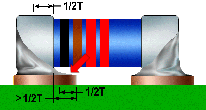METALLIZED ELECTRODE FACE-MELF
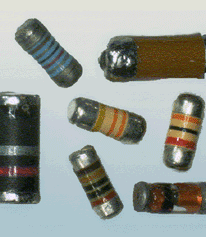
The Metallized Electrode Face (MELF) termination is characterized as a cylindrical package with metallized end caps, and is commonly used for the packaging of discrete diodes, capasitors and resistors. Since they are cylindrical, the MELF does nto have to be placed with the resistive elements facing away from the board surface, as is the case with rectangular chip packages. Like their through-hole axial cousins, MELFs are typically color-coded for value.
See Section 7.01 "Surface Mount Soldering, General Requirements", for common accept/reject criteria.
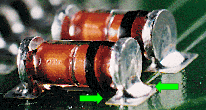
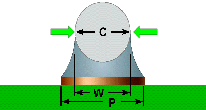
PREFERRED
The termination exhibits a concave fillet on the terminal faces, with evidence of good wetting to the metallization and the periphery of the land.
NASA-STD-8739.2 [8.7.4], [12.9.6]
PREFERRED
END JOINT WIDTH (C)
The End Joint Width (C) shall be equal to or greater than the component width (W) or width of the land (P), whichever is less.
Best Workmanship Practice
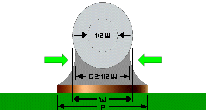
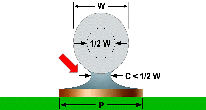
ACCEPTABLE
END JOINT WIDTH (C)
The End Joint Width (C) shall be .50% of the component width (W) or width of the land (P), whichever is less.
Best Workmanship Practice
UNACCEPTABLE
INSUFFICIENT END JOINT WIDTH (C)
The width of the end joint shall not be less than 50% of the component termination width (W), or land width (P), whichever is less.
Best Workmanship Practice

